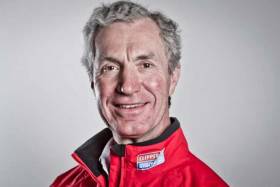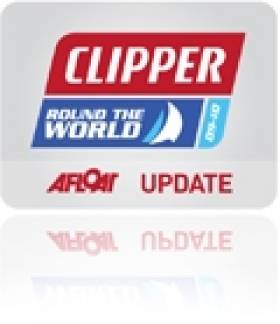Displaying items by tag: Clipper Ventures
The company that runs the Clipper Round The World Yacht Race has called for an independent inquiry into the official investigation of the death of a sailor during the most recent edition of the race.
Clipper Ventures have blasted UK’s Maritime and Coastguard Agency (MCA) and Marine Accident Investigation Branch (MAIB) for “failure of professionalism, impartiality and honesty” in their parallel probes of the overboard incident in the Southern Ocean that cost the life of 60-year-old retired solicitor Simon Speirs on 18 November 2017.
Despite his being tethered to the boat, as Clipper Ventures says, a “freak failure” of a tether safety clip led to Speirs entering the water as he was helping to reduce sail on board the yacht CV30, also known as GREAT Britain, amid increasing winds and sea state.
Spears was recovered from the sea by his fellow crew but could not be resuscitated. He was given a burial at sea the following day.
Clipper Ventures says the conclusions of investigations by the MCA and MAIB into the incident “are the cause of considerable concern” and involve “multiple errors and distortions of the truth” — including a suggestion by an MCA official that a nearby vessel could have taken Speirs’ body home to the UK for burial, when no such vessel existed.
Clipper Ventures also says it suspects that “significant and improper influence was applied to the MAIB investigation by the MCA team” in the bodies’ parallel investigations.
As of 1pm on Sunday 11 August, the MCA and MAIB have not released comment on Clipper Venture’s claims.
Sailing legend Sir Robin Knox-Johnston has announced a brand new fleet of 70-foot racers for the Clipper Round the World Yacht Race.
Top naval architect Tony Castro has been commissioned to design the Clipper 70 fleet that will compete in the race from 2013 onwards.
The new yachts, to be built in China and fitted out by international suppliers, will have an increased crew capacity of 22, and feature a new hull design optimised for performance that should see speeds increase to more than 30 knots in the right conditions.
Other features include twin helms, twin rudders and a six-food bowsprit which will allow for the use of a huge Code Zero sail to complement the Yankee headsails, staysail and mainsail.
The Clipper Round the World Yacht Race is open people from all walks of life regardless of previous sailing experience.
In its 15-year history the race "has changed people’s lives and turned almost 3,000 sailing novices into experienced ocean racers", according to Knox-Johnston.
Clipper Ventures chief excective William Ward added: "Crew places on the last race sold out well in advance and Clipper 11-12 is set to do the same. We will therefore be using the 2011 London International Boat Show to launch our crew recruitment drive for Clipper 13-14 and beyond.”
The Clipper 11-12 race - the last to feature the Clipper 68 sailing the 40,000-mile (64,000 km) round-the-world course - will commence this August.






























































